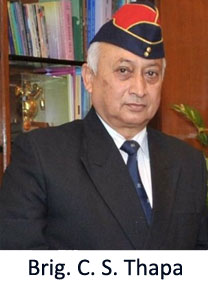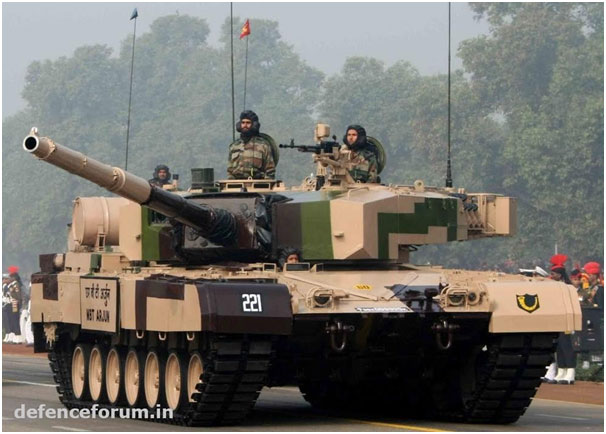
The Indian Army suddenly allowed senior anchor Vishnu Som to visit an Arjun tank regiment, and present the same on a television program. In his blog Som wrote, “The new Defence Minister NirmalaSitharaman visited 43 Armoured Regiment to get a firsthand look at the Arjun tank. A month later, she visited the Combat Vehicles Research and Development Establishment in Chennai where the tank was developed - signals which some say are an indicator that the Arjun Main Battle Tanks best days are yet to come”. Arjun after all fits into the government initiative of “Make in India”. The author does not wish to go into the Arjun versus the T-90 debate which is as old as it can be.
Nations the world over have a single Main Battle Tank (MBT), Israel Merkava (65tons), France Leclerc (57 tons), America M1A1 Abrams (54tons), Germany Leopard (62 tons), Russia T -90 (46 tons), India T- 90 and Arjun (58 tons), China Type-98/99, Pakistan- AlKhalid/MBT2000, based on the Chinese Type 90-II, with combined technologies from several Soviet and Western tanks. . Can India afford the luxury of design and development, managing production lines, logistics, combat bridging, inventory control, spare part management, and inter operability training of crews for two types of tanks. In ten years time the Future Main Battle Tank possibly named Karan will be around the corner, how many production lines will India run on 1.65% of GDP on defence? Or is it simply a case of confusion working in such a manner that the left hand does not know what the right hand is doing?
The idea of a Main Battle Tank (MBT) is to ensure that nation invests in one battle tank, which does multiple tasks with minimum modifications in all types of terrain, and meets the strategic mobility to include transportation by air, rail, road and sea and has strong punch with good battle field tactical mobility.

Such a combination for nations comes with a lot of debate and gaining or losing out on three important aspects of tank design, mobility, firepower, and armour protection. Thus design wise the Russians relied on mobility but were never out gunned to produce tanks in the 40 tons category and the Western nations gave equal importance to armour protection to produce tanks in the 60 ton category. The weight of a tank has two impacts on mobility firstly strategic which means the ability to move a tank from one theater of operation to another and also combat bridging which means the types of bridges an army employs to overcome obstacles. Tactical mobility is the ability to move on the battle field generally heavier tanks have an advantage, but with use of reactive armour, better power to weight ratios, a large number of tank developing countries are in the 40 ton plus region. The 50 ton plus tank guzzles diesel as its engine has to be around 1400 horse power, the logistics train increases and the gun remains the same, thus what advantage in carrying additional weight penalty needs to be monitored in development stage.
In the subcontinent the tank still is the center piece. If a war on two fronts has to be fought the role of mechanized forces becomes more critical. Mechanized forces give India a greater chance of decisive victory due to their ability to carry out operations with tempo to get results out of proportion and also inflict damage on an enemy, in a short sharp conflict lasting a couple of days in the back drop of a nuclear environment. Mechanized forces can rapidly deploy and redeploy thus have an inherent advantage of multi tasking which is bound to happen when more than one front is opened. Thus for reasons of NBC protection, tempo of operations in short duration conflict, and an ability to get decisive results in a short time frame, as also, accuracy of fire and causing least collateral damage the tank in the Indian sub-continent is very much the center piece of battle.
Today the thought process should be on, “what is going to be the type of MBT that meets the Chinese threat in the high altitude,(who have designed and developed a special tank for Tibet), outguns and out maneuvers all known tanks in the plains and semi developed theater with least logistics drain on production lines, ethos of the fighting man and meets the requirement ten years ahead”. There is also a need to get either mobility or enhanced fire power in the low hills terrain of the western sector to get results. The emphasis therefore is on a single production line being cost effective, where does the Arjun fit in all this is the moot question that needs to be asked? The answer lies in looking at tomorrow.
(The writer is an Indian Army veteran who has authored books Gorkha: In Search Of Identity and Gorkha: Society and Politics)
